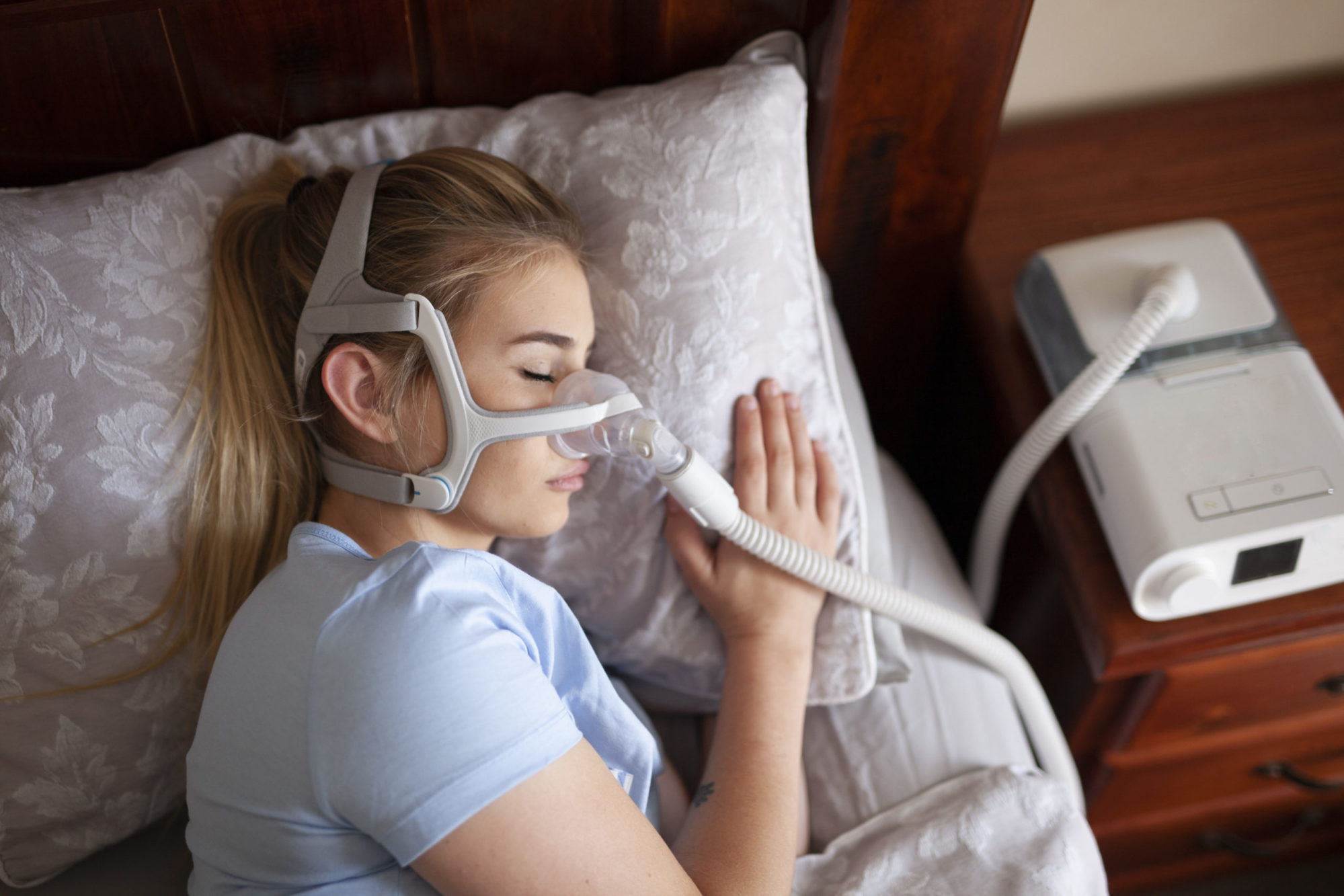A good night’s rest plays an invaluable role in an individual’s physical, mental, and emotional health. Unfortunately, about 25% of men and 10% of women suffer from sleep apnea, which means they’re not getting the proper amount or type of sleep each night. Even worse, sleep apnea is often difficult to detect, which means people can suffer for years without understanding why.
What is Sleep Apnea?
Sleep apnea is a disorder that causes a person’s breathing to stop temporarily and frequently while they’re asleep. There are two types:
- Obstructive
- Central
Obstructive is the most common. It occurs when the throat muscles relax too far and end up blocking the person’s upper airway. The diaphragm and chest muscles then struggle to keep the airway open by increasing pressure. The person will start breathing with a sudden gasp and full-body jerk.
Central sleep apnea is caused by a malfunction in the central nervous system. The same basic breathing issues occur, but they’re not caused by a physical blockage of the airway. Instead, the body’s respiratory control center fails to move certain muscles correctly, so the body stops breathing temporarily.
Depending on the type of sleep apnea you have, different types of treatment are necessary. While a general practitioner can treat many instances of sleep apnea, in some cases they’ll refer you to a sleep specialist, dentist, or TMJ specialist.
Signs of Sleep Apnea
Sleep apnea is potentially dangerous because it’s difficult to self-diagnose. A person can stop breathing 30 times an hour or more throughout the night, but they’ll never fully wake up, so they don’t realize the extent and severity of the problem.
Symptoms of sleep apnea include:
- Loud, consistent snoring (usually loud enough to wake a partner)
- Episodes of stopped breathing (typically observed by a partner)
- Waking up in the morning with a headache, dry mouth, and/or a sore throat
- Waking up throughout the night gasping or choking
- Persistent nighttime sweating
- Sleepiness, difficulty concentrating, or mood swings during the day
Usually, the person’s partner will need to spot the signs of a potential problem, a situation referred to as “witness apnea.” They’ll notice not only the snoring but also the often-frightening pause in breathing that follows.
What Increases a Person’s Risk of Sleep Apnea?
Sleep apnea can potentially affect anyone at any age, even young children. However, certain physical and lifestyle factors do increase a person’s likelihood of developing sleep apnea, especially the obstructive type. Risk factors include:
- Weight – A significant number of sleep apnea sufferers are overweight. Excess fat in the upper airway can obstruct breathing.
- Sex – Men are roughly twice as likely to develop obstructive sleep apnea compared to women.
- Family History – Individuals with parents or other family members who have sleep apnea are more likely to have it themselves.
- Genetics – Genetic conditions such as asthma, chronic nasal congestion, narrow airways, and enlarged tonsils can contribute.
Risk factors compound. For example, an overweight man with a family history of sleep apnea has a more significant risk than someone with only family history.
Complications of Sleep Apnea
Sleep apnea can lead to major health problems, especially if left untreated for years:
1. High Blood Pressure
High blood pressure and sleep apnea have a significant bidirectional relationship. As one gets worse, the other follows. An estimated 70% of sleep apnea sufferers have hypertension.
2. Fatigue
Normal sleep is impossible for those with sleep apnea, so they’ll feel excessively, chronically tired. Many times, they’ll fall asleep throughout the day, such as when reading, watching TV, or even driving. Sleep apnea doubles the risk of workplace accidents and is a major contributor to auto accidents across the country.
3. Partner Disruption
Sleep apnea can create problems for the entire household. Some people with the condition snore so loudly, and so frequently, they not only wake up their bedmate, but also those in other rooms. Significant relationship problems can result over time.
Treating Sleep Apnea
A Continuous Positive Airway Pressure (CPAP) device is by far the most common treatment. It’s a mask that keeps the person’s airway open by pumping a continuous stream of air. The mask is worn all night while the person sleeps. It’s incredibly effective for the majority of sleep apnea sufferers.
CPAP machines can have a bad reputation, as early models were fairly loud and cumbersome. However, today the technology has advanced considerably, and most masks are lightweight and make little noise.
For people who can’t wear a mask, two options are available. They can have surgery to remove tissue from their upper airway. Also, special devices can be worn in the mouth that push out the lower jawbone, which helps keep the airway open.
Conclusion
Snoring isn’t always taken seriously, but it can indicate a significant health risk. Sleep apnea affects tens of millions of Americans, and leads to a variety of serious problems, such as high blood pressure, workplace accidents, and more.
Fortunately, diagnosis is usually straightforward, especially with the help of a partner. Anyone who suspects they have sleep apnea should seek out help, because effective treatments are available, and often truly life-changing.








Leave a Reply
You must be logged in to post a comment.